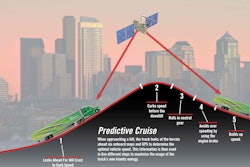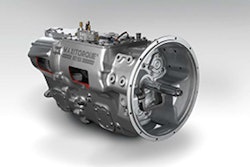One surprising trend over the past few years has been the unprecedented market share growth of automated manual transmissions. Many OEMs now are reporting AMT take rates that would have seemed improbable when the first units appeared on North American shores.
Volvo, Daimler Trucks North America and Paccar all report AMT specifications in more than half their tractors sold so far this year. In April, Con-Way Truckload announced it was purchasing 635 new Class 8 tractors – all spec’d with AMTs.
While some drivers remain resistant to AMTs, every year more are won over by their ease of use and additional safety advantages. Fleet managers have found them to be largely bulletproof in terms of overall durability, performance and decreased maintenance costs in terms of clutch replacement. OEMs say that AMTs by themselves can deliver a fuel economy increase between 5 and 7 percent for a Class 8 linehaul tractor depending on application – another benefit enjoyed by fleet executives.
Now there’s a new wrinkle to the AMT proposition. Integrated powertrains were born out of the ability of vertically integrated OEMs to design diesel engines and AMTs that communicate electronically using sophisticated proprietary telemetry to further optimize the fuel economy advantages offered by AMTs.
Other OEMs and component suppliers saw opportunities to offer similar systems, and soon cooperative partnerships with proprietary code sharing sprang up between Eaton and both Cummins and Paccar.
Multiple benefits
Fleets quickly recognized the advantages of integrated drivetrains. “Almost three-quarters of the trucks we sell today have integrated drivelines, and acceptance is still growing,” says John Moore, product manager of drivetrains for Volvo Trucks. “The product was launched in 2007 with limited production in the first year, so we reached this level in approximately six years.”









